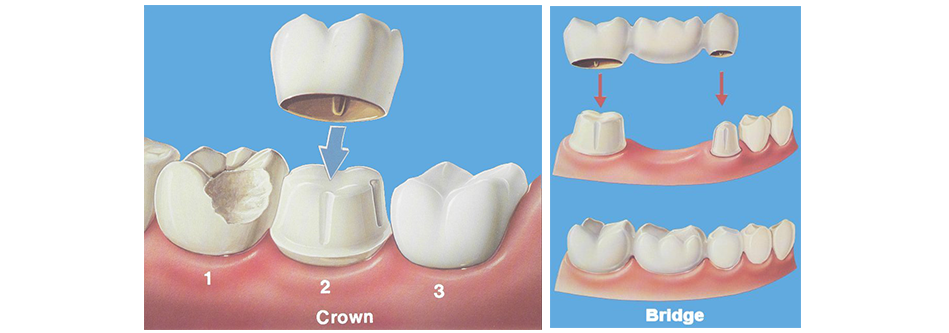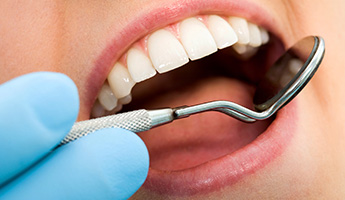Cosmetic Dentistry in Galway
There are many different types of restorative treatments available at Rdent Galway including:
Metal Free Bridges & Crowns

Bridges
A Dental Bridge, also known as a fixed partial denture, is a dental restoration used to replace a missing tooth by joining permanently to adjacent teeth or dental implants. Dental Bridges are literally “bridge the gap” between remaining teeth, stabilizing the jaw by surrounding those teeth with attractive crowns. Crowns are then placed on the shaped teeth and attached to an artificial tooth.
The Dental Bridge Procedure
The procedure involved in having a bridge preparation is a relatively pain free experience however, the preparation visit may take a considerable length of time depending on how many unit are involved. Firstly, you are given a local anaesthetic. After the anaesthetic, your dentist will prepare the teeth required to support the bridge. Next, your dentist takes an impression of the prepared teeth. Your bridge is fabricated based on this model by a skilled laboratory technician so that it precisely fits the prepared teeth. While your bridge is being fabricated, your dentist fits you with a temporary bridge so the teeth and gums can be protected from damage until your permanent bridge is ready. To complete the dental bridge procedure, you must return to the dental Surgery for a second visit to have the bridge fitted and cemented.
Bridges Consultation and Treatment Planning
If you are considering having a Dental bridge, phone for a consultation with Dr Rashid at Rdent, Unit 70 Galway Shopping Centre, Headford Road, Galway and he will be more than happy discuss the several different types of fixed dental bridges.
During the first visit, your dentist examines the health of your gums and other teeth to evaluate if you are a candidate for a dental bridge. If you and your dentist determine that a dental bridge is the best replacement for your missing tooth or teeth, you will be advised of different materials that the dental laboratory can use to make your restoration.
Recommended materials will depend upon where in the mouth the bridge will be placed, whether or not you grind or clench your teeth and other factors outlined by your dentist. We offer Metal free Bridges and Crowns with high-strength metal-free materials such as zirconia or alumina.
Dental Bridges Recovery and Post-Procedure Care
After your dental bridge has been cemented into place, your dentist will provide you with hygiene information to maintain the performance and longevity of your restoration, along with the health of your teeth and gums. It is very important that you exercise proper dental hygiene. We strongly recommend that visit your dentist for regular checkups following Dental Bridge(s) and that you attend our hygienist for thorough professional cleaning a few months after the bridge has been placed.
Crown
A Dental Crowns, also known as “caps,” preserve the functionality of damaged teeth. A dental crown may be used to protect a cracked tooth, restore functionality of a tooth with excessive decay or replace a pre-existing crown. Crowns are often needed when a large cavity threatens the ongoing health of a tooth. The purpose of a dental crown is to encase a needy tooth with a custom-designed material. It completely caps or encircles a tooth or dental implant.
The Dental Crown Clinical Procedure
During the dental crown procedure, your dentist prepares the tooth and makes a molded impression of the teeth to send to a dental laboratory. A fitted, temporary crown is created during this visit to temporarily protect the tooth while the final restoration is being made in the dental laboratory. Once completed, the tooth crown is cemented or adhesively bonded at a later visit.
Dental Crowns Recovery and Aftercare
After your permanent crown has been placed, your dentist will provide you with information about caring for your new restoration. In general, maintain proper oral hygiene habits by brushing twice daily and flossing with dental floss or interdental cleaners (specially designed brushes and sticks) once a day. These practices will help to remove plaque from the area where the crown meets the gum, and help prevent dental decay and gum disease.
Your dentist may recommend a visit to our hygienist for thorough professional cleaning a few months after the permanent crown has been placed. It is important that you avoid chewing hard foods, ice or other hard objects, since this could damage your crown. It also is important to avoid biting your fingernails and grinding your teeth.


Add Comment